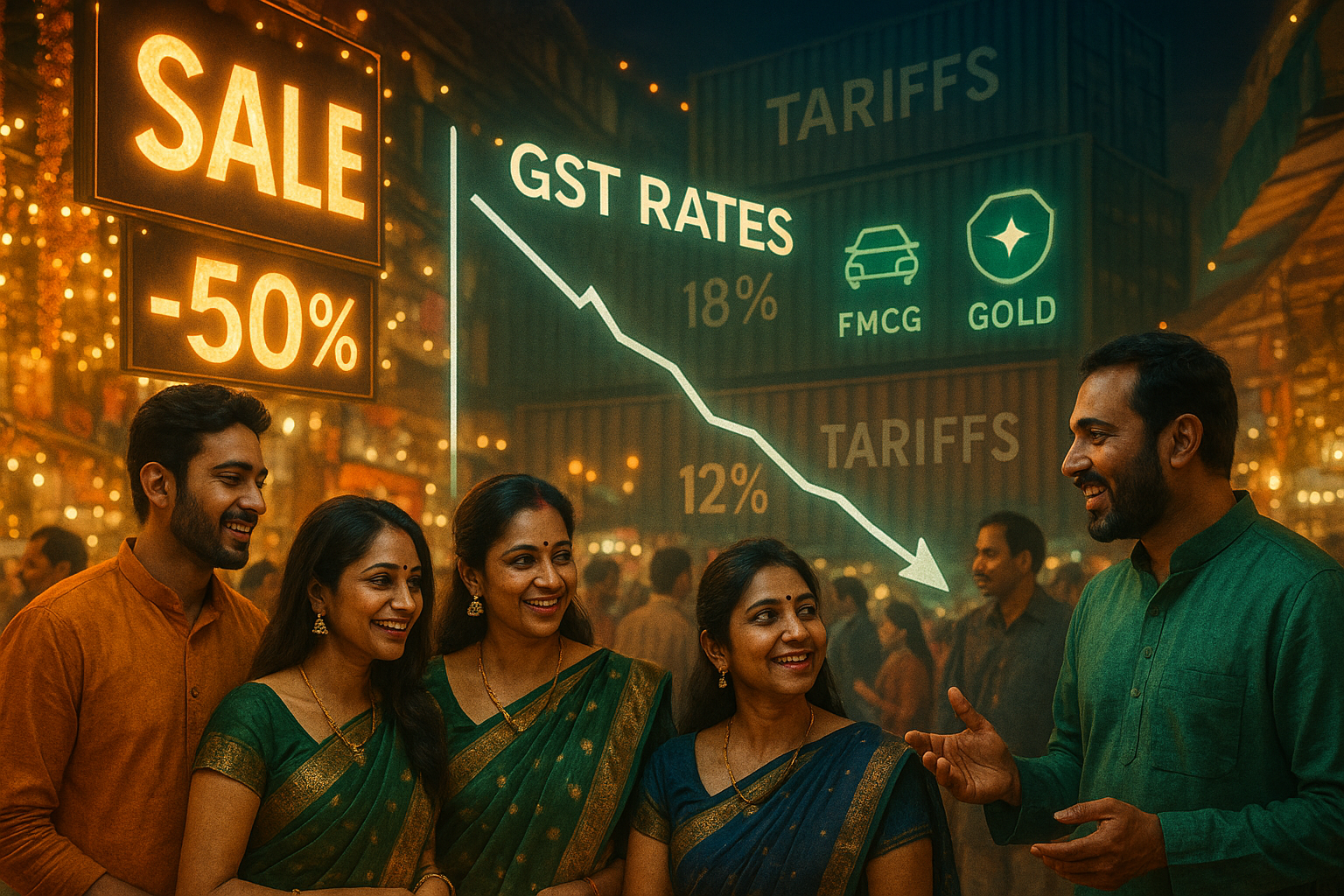Indian bankers believe that the double tailwinds of festive season demand and GST rate cuts under GST 2.0 will help cushion the impact of steep U.S. tariffs on Indian exports. While concerns remain over external shocks, strong domestic consumption and tax rationalization are expected to provide stability to India’s growth trajectory in the near term.
This assessment highlights the growing confidence in India’s domestic demand engine to offset global headwinds, at least in the short run.
Core Development
Bankers pointed out that:
Festive Season Boost: Consumer spending on automobiles, electronics, gold, and FMCG is expected to accelerate.
GST Relief: Lower rates on essentials and services will improve affordability, supporting demand.
Exports Pressure: Tariff hikes by the U.S. remain a challenge, but domestic demand can absorb some of the shocks.
With both policy and seasonal factors in play, bankers see credit demand rising, especially in retail and SME segments.
Key Drivers Behind the Outlook
Consumption Resilience: India’s large domestic base supports spending despite external volatility.
Policy Tailwinds: GST cuts free up disposable incomes and reduce compliance burdens.
Banking Sector Readiness: Liquidity conditions remain favorable for credit expansion.
Stakeholder Impact
Consumers: Benefit from GST-driven price relief during peak festive demand.
Banks: Expect stronger loan growth, particularly in retail and SME lending.
Government: Gains confidence that reforms are helping stabilize economic activity.
Industry & Policy Reactions
Economists echoed the bankers’ view, noting that domestic demand has historically cushioned India during global downturns. However, analysts also warned that sustained tariffs could eventually weigh on investment and employment in export-heavy sectors.
Challenges Ahead
Export Headwinds: Tariffs could erode competitiveness in textiles, leather, and gems & jewelry.
Inflation Risks: Strong consumption could pressure supply chains.
Global Uncertainty: Prolonged trade disputes may still dampen sentiment.
Strategic Outlook
India’s reliance on domestic demand, supported by GST reforms, provides a short-term buffer against tariff shocks. However, sustaining growth will require long-term strategies in export diversification, investment revival, and supply chain resilience.
Why This Matters
The analysis underscores India’s dual growth model — balancing external trade with domestic consumption. At a time of global trade disruptions, this balance is critical for economic stability and investor confidence.












